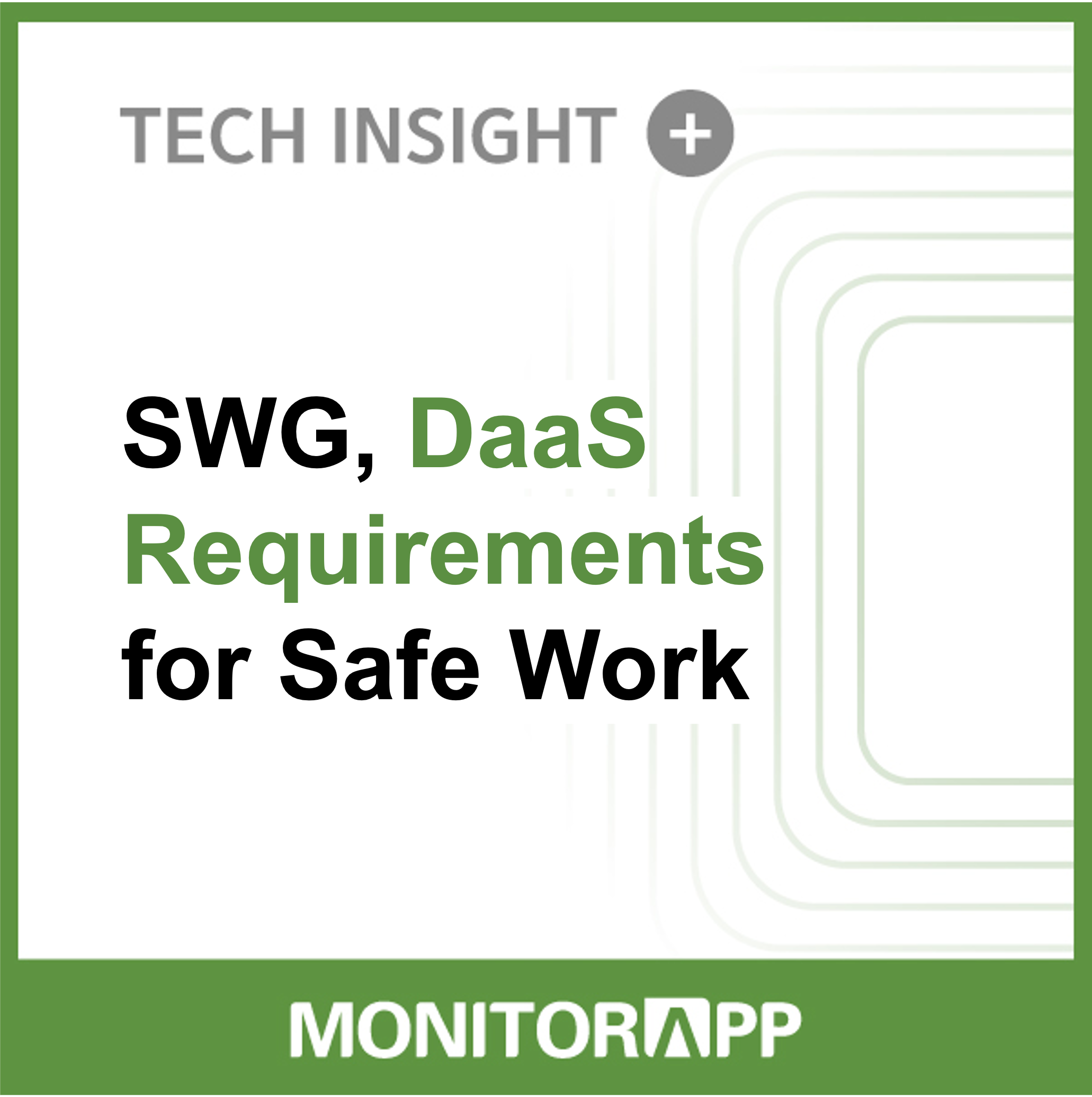
Throughout the pandemic, various work environments have emerged, and as a result, the IT environments of companies and public institutions have rapidly become digital.
Beyond face-to-face work in the office, it is now commonplace to do business from anywhere.
These changes make it easier for members of an organization to expose critical data stored on handsets they use to work in multiple locations to risks such as information leakage and hacking, making them harder to effectively manage and control.
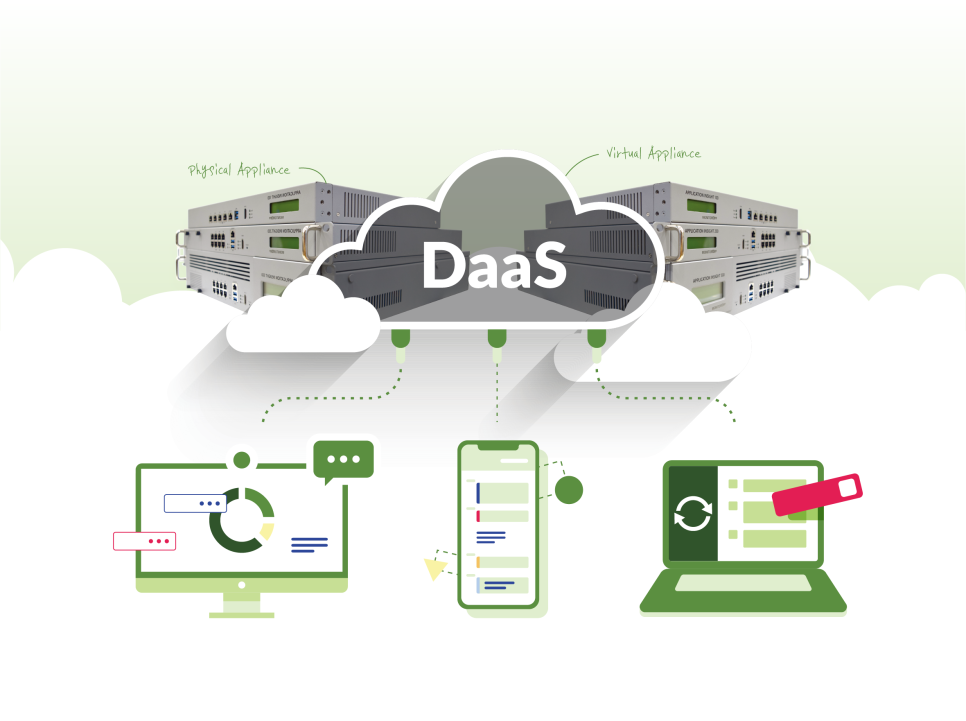
In addition, differences in hardware specifications and software configurations of each device can reduce work efficiency.
Desktop-as-a-service (DaaS) has emerged to address these issues.
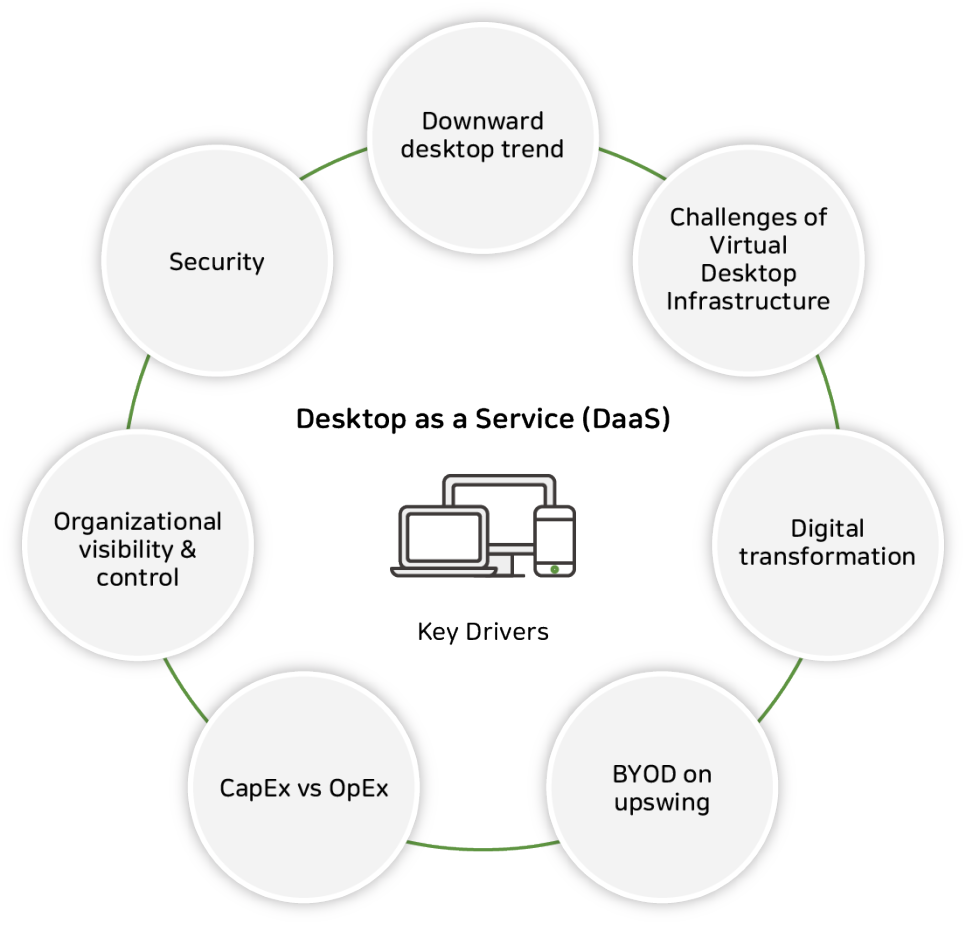
DaaS is a desktop in the form of a service that stores most of the resources needed to provide a consistent work environment within the enterprise,
such as operating systems, applications, and files, on the cloud.
This allows members to access the cloud anytime, anywhere over the network and work in the same environment.
The use of DaaS eliminates the need for members to store critical data on their devices and gives them the flexibility to continue working through other devices in the event of a failure or loss of a device.
However, DaaS environments are also desktops, so they are not completely free from the risk of malicious code infection through visits to harmful sites,
so the use of security solutions for DaaS environments is essential.
Businesses' sensitive information has been constantly at risk due to malicious code infections through access to harmful sites, attacks through spam mail,
and leakage of members' internal information, which can result in fatal losses to businesses.
Responding to this situation, businesses need security solutions to configure a more secure network environment, and secure web gateway (SWG) has emerged.
SWG is a solution that filters unwanted software and malware from web and Internet traffic and applies corporate and regulatory policy compliance.
According to Gartner, SWG should include 'URL filtering', 'malicious code detection and filtering', and 'application control'.

"URL filtering" is a function that categorizes websites into several categories, protects users from potential threats by restricting access to known harmful sites,
and increases work efficiency by limiting access to non-business sites.

However, to compensate for vulnerabilities in unknown malicious sites, all web response traffic should be checked.
This requires the ability to 'detect and filter malicious codes'.

In addition, with the increasing utilization of web-based applications and the presence of cases of file uploads to personal clouds or information leakage through mail,
"control of web-based applications" is essential to prevent such information leakage.
Companies must use SWG with additional features in case of an evolving attack as well as these three essentials.
MONITORAPP's AISWG is a complete SWG with not only the essentials of SWG, but additional features.

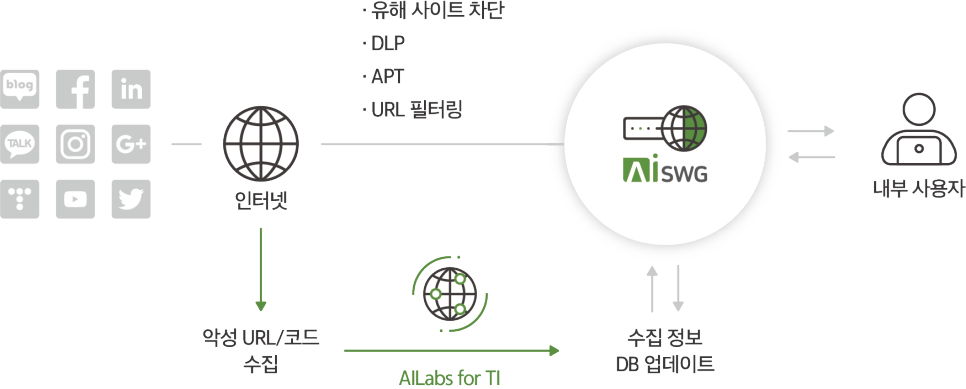
AISWG also includes the following features to prevent executives and employees from using the Internet and leaking information.

"ATP"
ATP is a function that performs detailed analysis of files exchanged through the web and blocks malicious files from affecting users, thereby blocking threats to malicious files.

"Web DLP"
The Web DLP function performs deep packet inspection on all requests/response to block specific keywords in the request/response, control specific file sizes,
and block information leakage attempts through mainly used personal information templates
such as resident registration numbers and driver's license numbers to prevent data leakage.

"Web Mail Control"
Web Mail Control is a function that performs functional control on web mail used according to the internal business regulations of the company.
It is possible to control web mail by function according to the original logging of transmitted/received web mail and
internal business regulations such as 'reading', 'writing', 'restriction of attached files', and 'keyword restriction'.
With SWG products that include various functions like this, we will be able to ensure the safe use of the Internet for executives and employees in the enterprise
not only in general work environments but also in DaaS environments.
MONITORAPP's AISWG can be implemented in a traditional physical appliance method installed inside Data Center and
a Virtual Appliance method that deploys and configures virtual machines installed in a public or private cloud.
When configured as a physical appliance, it can be configured in 'Inline Mode', 'Forward Proxy Mode', and 'Mirroring Mode',

and for Virtual Appliance, it can be configured in 'Inline Mode' and 'Forward Proxy Mode', respectively.
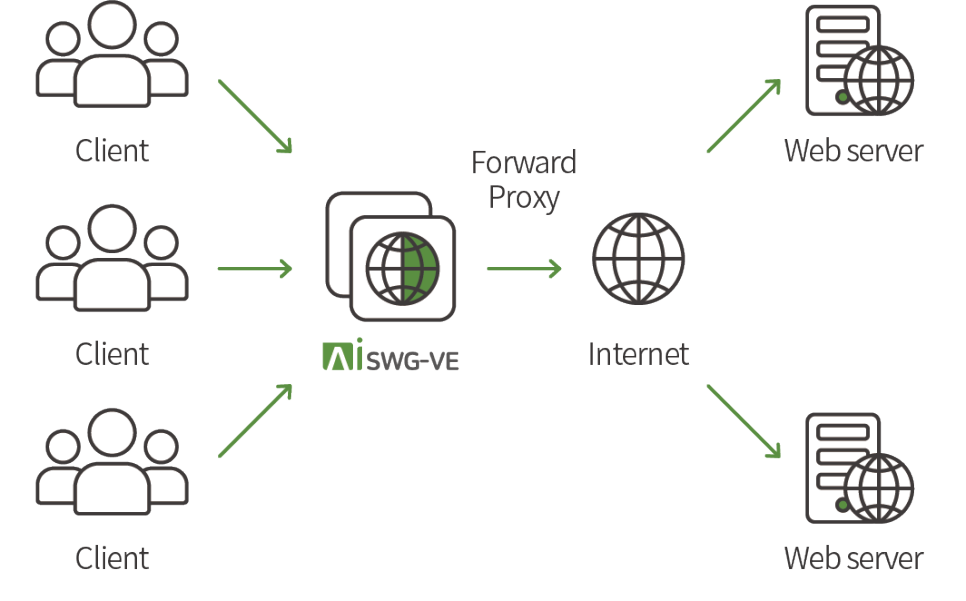
With MONITORAPP's AISWG/AISWG-VE, which supports all deployment/configuration environments,
prevent executives and employees from using the Internet and leaking sensitive information.

